Reading Time: 43 Minutes
Influencer marketing has taken social media by storm in the last five to 10 years. Since COVID-19, more talented people have joined the Creator Economy and revolutionized the way brands connect with audiences online.
These 101 influencer marketing statistics demonstrate that creators set the tone for brand sentiment on social media. The data also demonstrates that social media is a marketplace where digital word-of-mouth can “make or break” brands in the 21st Century.
As you go through this list of influencer marketing statistics, look for answers to some of the biggest questions in the industry:
Once you have answers to these questions, you can also leverage these statistics to do the following:
(Source: Mediakix)
Consumers appreciate third-party, lifestyle content over polished images and videos from the brand’s own creative team.
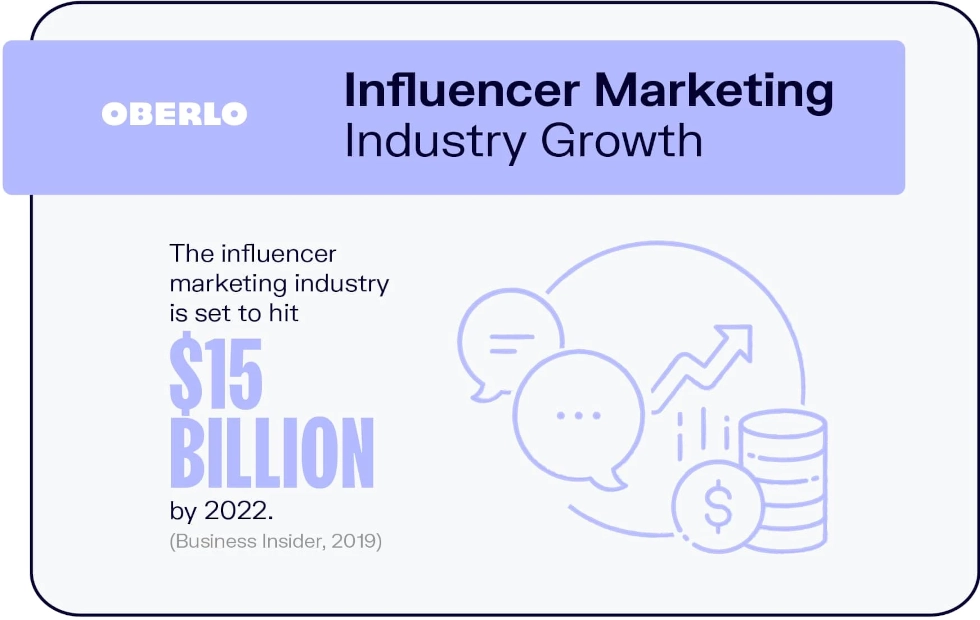
Image via Oberlo
(Source: Mediakix)
User engagement is one of the best ways to track whether content resonates with a particular audience online.
(Source: Lumanu)
Influencer whitelisting occurs when a creator gives a brand they trust advertising permissions on their social media account. The brand uses that creator’s content to promote ads to new audiences from the creator’s profile. These ads feel more organic to consumers and as a result, perform better than traditional advertising.
(Source: Mediakix)
(Source: Mediakix)
(Source: Mediakix)
(Source: Mediakix)
EMV calculates the value of all third-party mentions. Social accounts with high EMV achieve significant ROI from a single post, whereas those with low EMV have little to no impact.
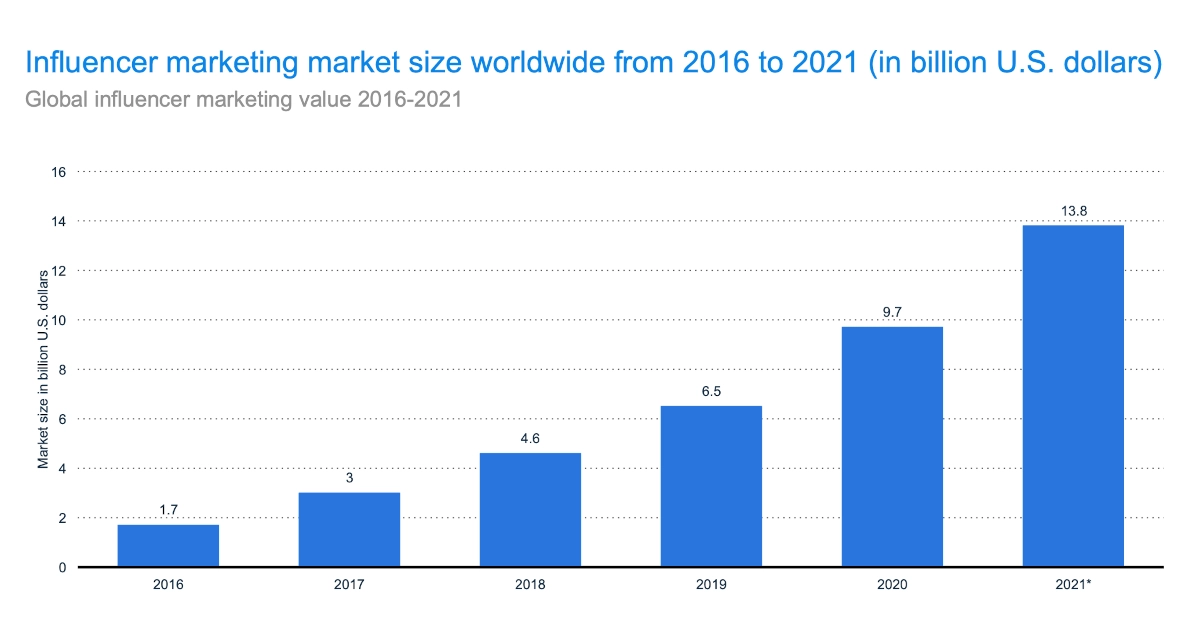
Image via Statista
Even though influencer marketing was growing rapidly in 2019, lockdowns and safety protocols associated with a global pandemic further elevated the role of social media creators among consumers.
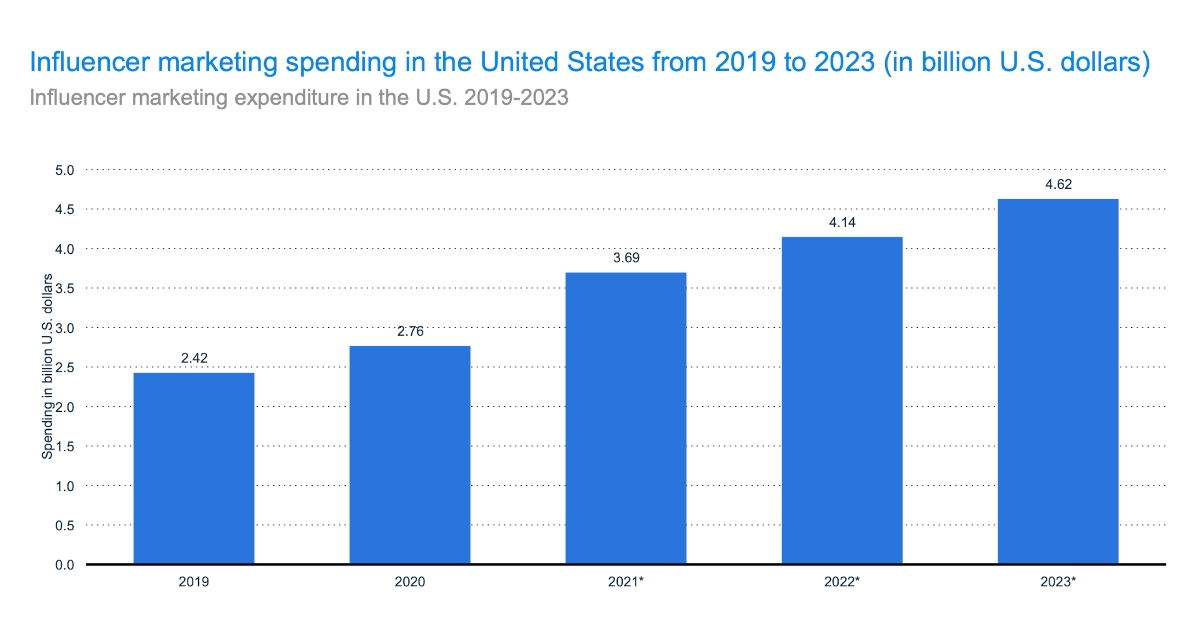
Image via Statista
(Source: Statista)
(Source: Statista)
Influencer marketing has performed well for B2C ecommerce brands. Now, several B2B industries are cashing in and achieving great success.
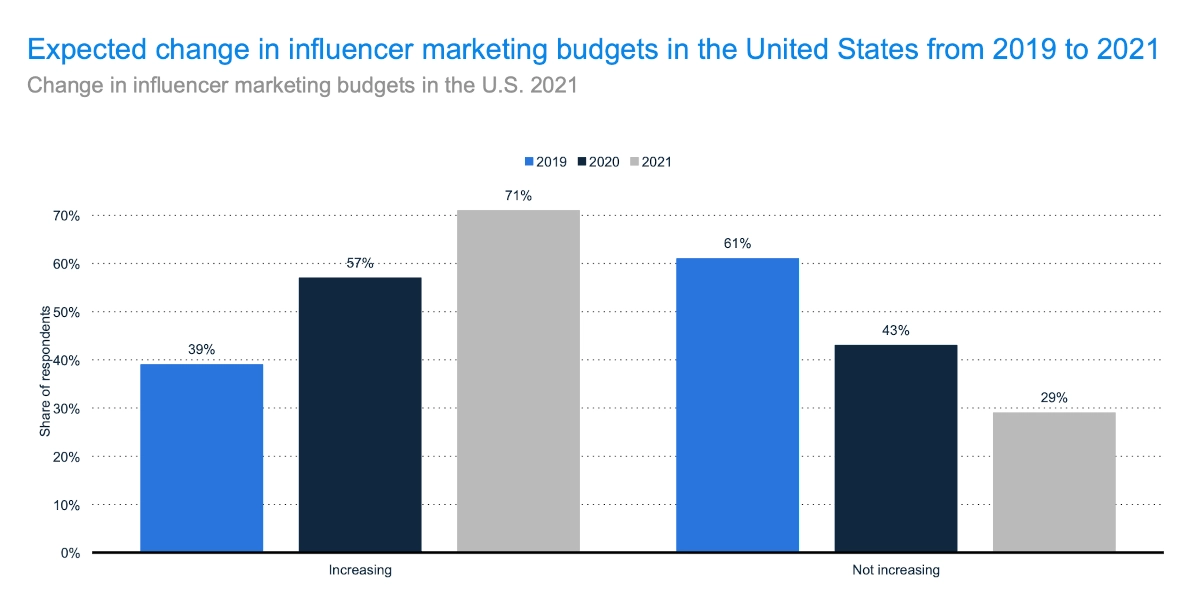
Image via Statista
(Source: Statista)
The social proof associated with an authentic brand endorsement by an influencer can shorten the buyer’s journey, lower customer acquisition costs (CAC), and increase customer lifetime value (CLV).
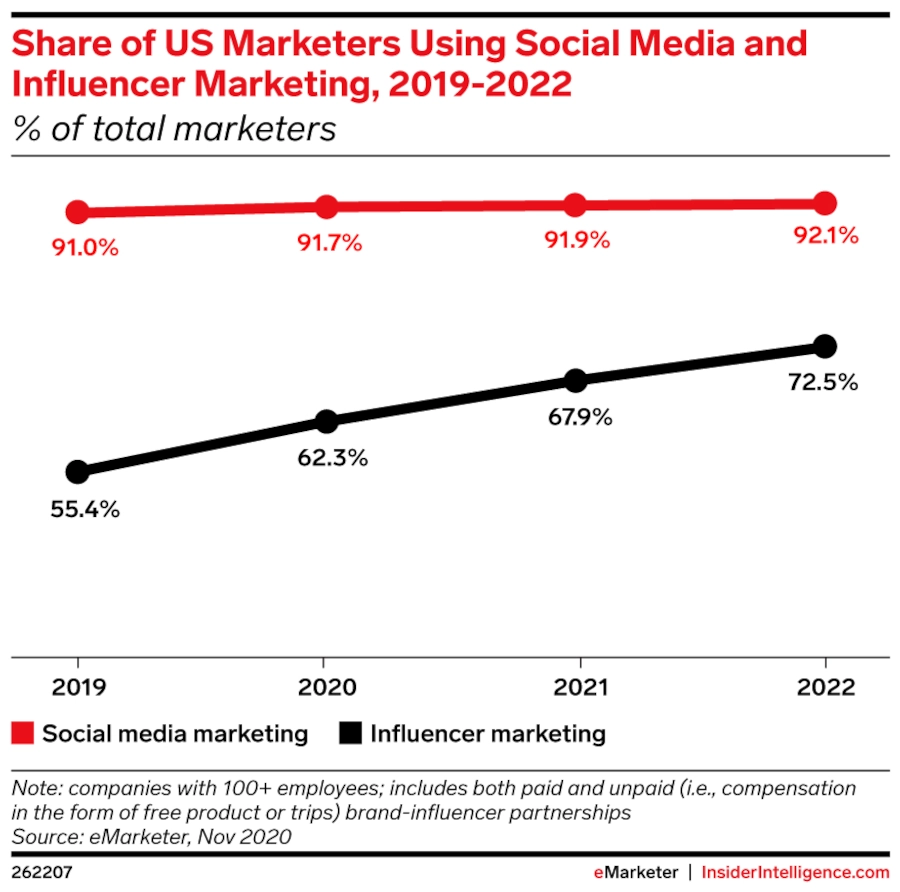
Image via eMarketer
Creator management is increasingly going hand-in-hand with social media marketing.
(Source: eMarketer)
An additional 20% of marketers said that they would keep their 2020 influencer marketing budget intact for the new year. Only 19% of brands either planned to decrease their budget or were undecided.
(Source: Oberlo)
Though followers may not know their favorite creators personally, they see those creators as honest and trustworthy. Influencer marketing is an effective way to spread digital word-of-mouth.
(Source: GRIN Report: Power of Influencer Marketing in Numbers)

Image via GRIN Report: Power of Influencer Marketing in Numbers
It’s not that consumers hate being marketed to, it’s that they want brands and influencers to be up front about what they post and why. Adding the appropriate hashtags (#sponsored) and disclaimers helps you and your creator partners be transparent with your audience.
(Source: GRIN Report: Power of Influencer Marketing in Numbers)
When it comes to follower counts, bigger isn’t always better. By taking a closer look at how that influencer connects with their followers, you can get a better sense of how they can help you reach your goals.

Image via GRIN Report: Power of Influencer Marketing in Numbers
(Source: GRIN Report: Power of Influencer Marketing in Numbers)

Image via GRIN Report: Power of Influencer Marketing in Numbers
When creators interact regularly with their followers, it nurtures a genuine connection that results in greater engagement and conversions.
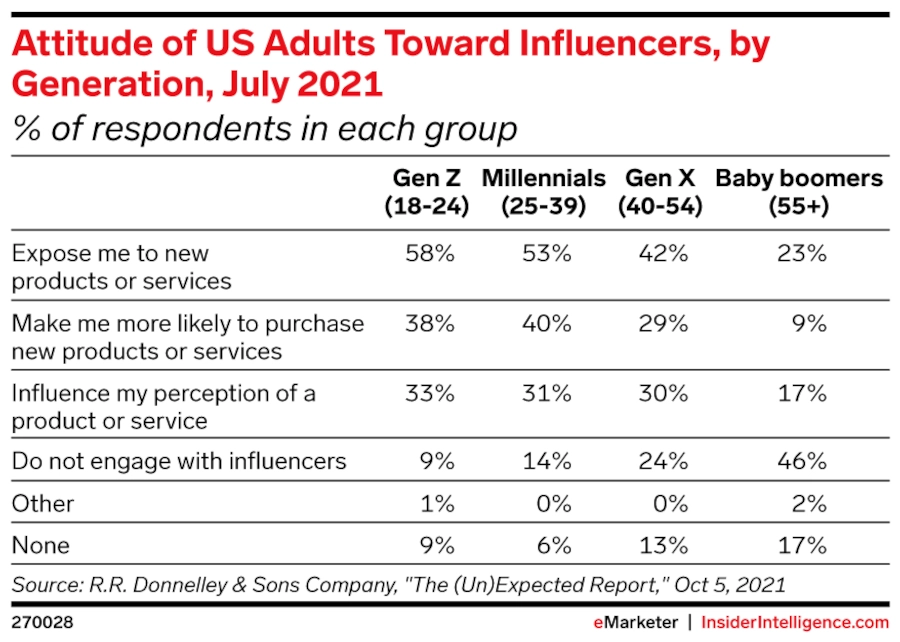
Image via eMarketer
The next generation of buyers overwhelmingly favor products and brands endorsed by creators that they trust.
(Source: GRIN Report: Power of Influencer Marketing in Numbers)
When it comes to influencer trust, 26% of men seem to be more trusting of influencers for purchasing decisions, compared to 13% of women.
(Source: GRIN Report: Power of Influencer Marketing in Numbers)
Studies show that men are likely to spend $500 more than women when an influencer promotes a product.
(Source: GRIN Report: Power of Influencer Marketing in Numbers)
(Source: GRIN Report: Power of Influencer Marketing in Numbers)
Authenticity remains the single greatest factor when it comes to influencer marketing success.
(Source: GRIN Report: Power of Influencer Marketing in Numbers)

Image via GRIN Report: Power of Influencer Marketing in Numbers
(Source: GRIN Report: Power of Influencer Marketing in Numbers)
Online buying can be tricky for those who prefer to see or handle products in real life before making a purchase. But when a creator that they trust uses and praises a product, consumers are more likely to take a chance on that brand.
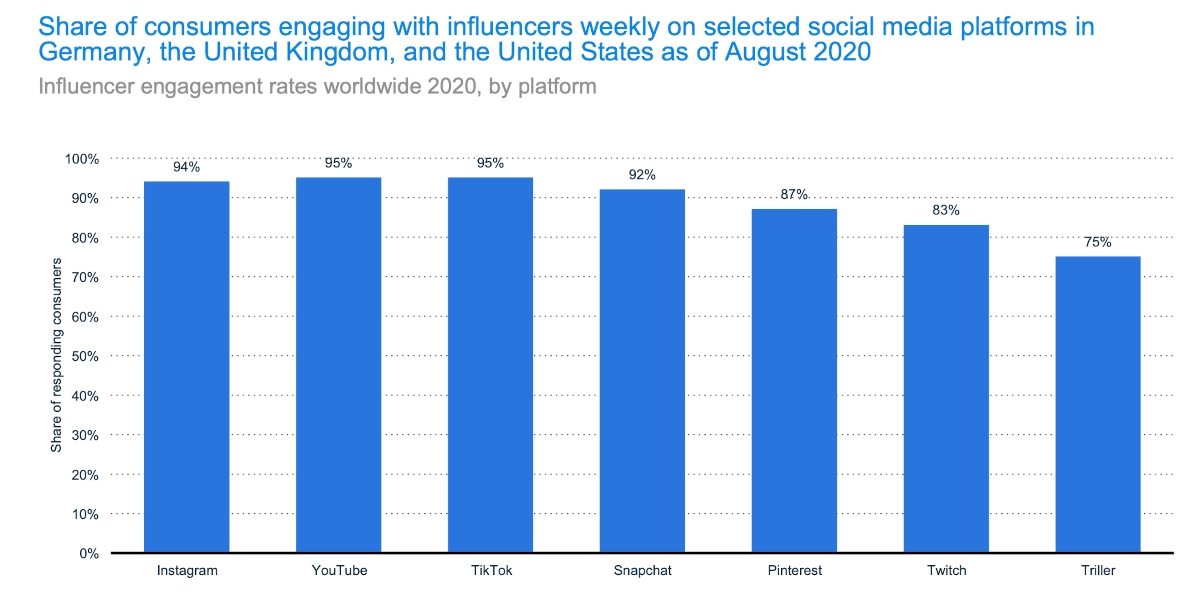
Image via Statista
(Source: Statista)
These consumers reported that they “often” or “sometimes” sought recommendations from travel influencers, while an additional 22% stated that they also do so on rare occasions. Of all those surveyed, only 15% said that they didn’t consult influencers at all before planning trips.
(Source: eMarketer)
Brands are increasingly interested in live streaming features on Instagram, Facebook, YouTube, TikTok, and Twitch.
(Source: Statista)
(Source: Statista)
(Source: Statista)
(Source: Forbes)
Strong brand-influencer relationships keep campaigns authentic and creator excitement high. The “middle man” approach to influencer marketing often results in transactional relationships that alienate buyers.
(Source: BigCommerce)
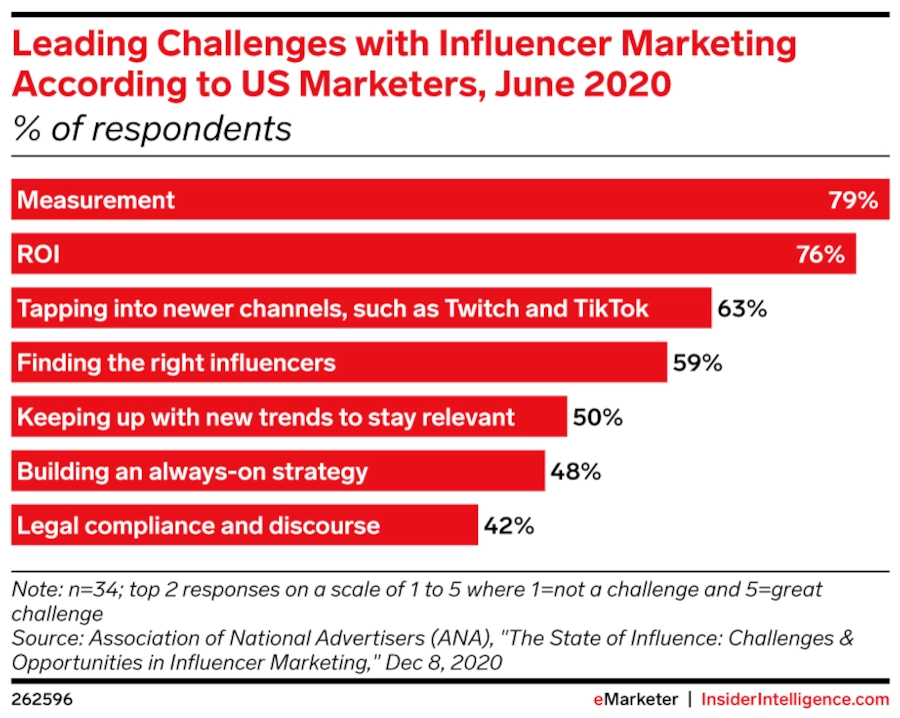
Image via eMarketer
Many marketers are still trying to track their creator campaigns across several different tools and spreadsheets. Creator management is shifting toward leveraging intuitive automation tools that can accurately attribute influencer performance.
(Source: eMarketer)
Brands that are investing more resources into creator management are learning how to measure campaign performance across all stages of the marketing funnel. This approach allows them to gather more metrics to better calculate influencer ROI.
(Source: eMarketer)
Recruiting the right creators makes all the difference in your campaign performance. Scaling your program often means incorporating better outreach and relationship management tools for your brand.
(Source: Mediakix)
(Source: BigCommerce)
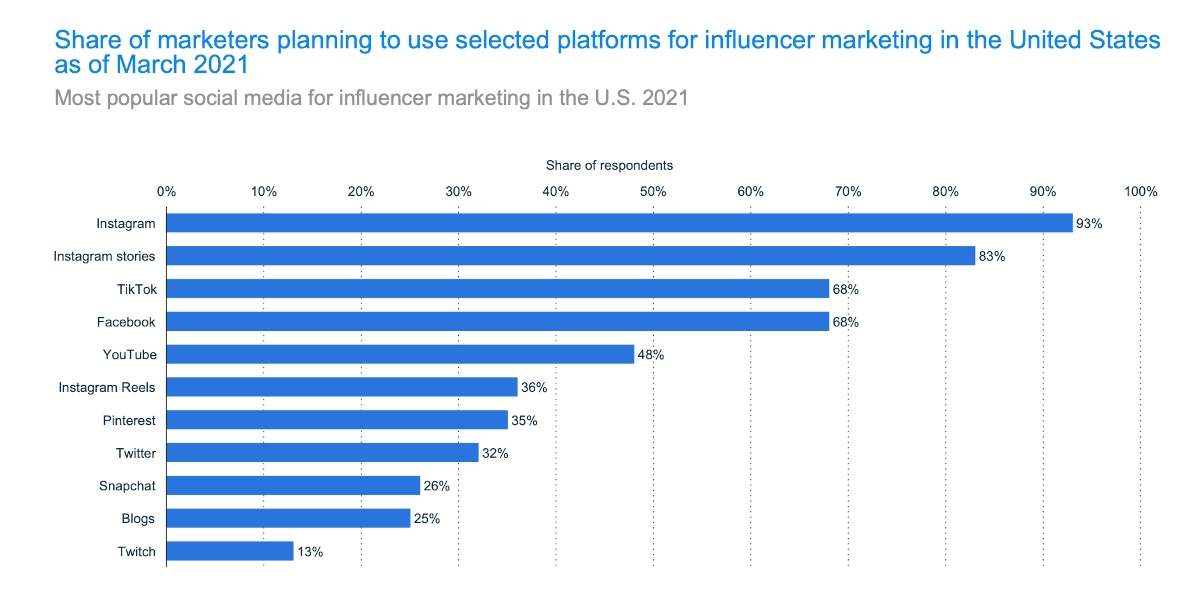
Image via Statista
(Source: BigCommerce)
(Source: CNBC)
Owned by China’s ByteDance, TikTok officially launched in 2016 and is now a global sensation.
(Source: Statista)
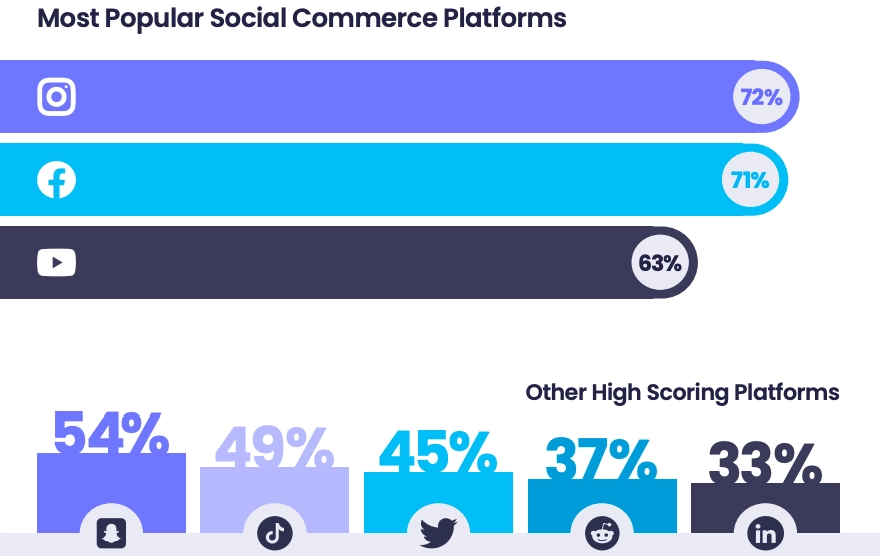
Image via GRIN Report: Power of Influencer Marketing in Numbers
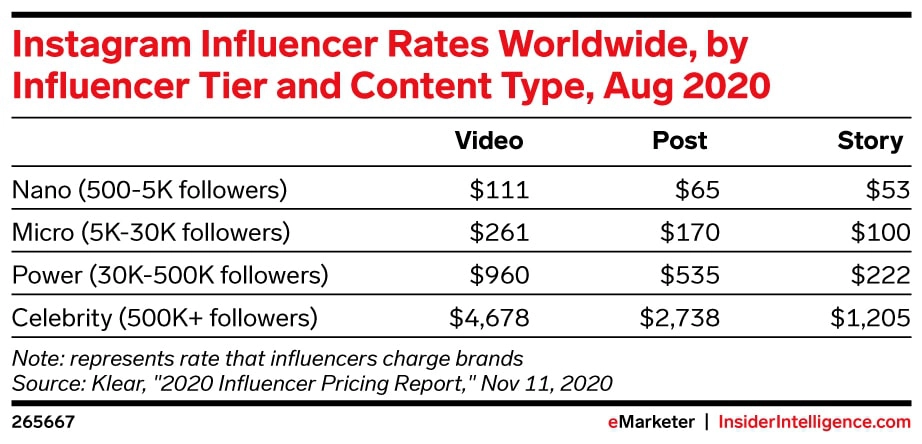
Image via eMarketer
The average micro influencer video costs $261, compared to $170 per sponsored post. This cost gap increases among macro and celebrity influencers. That said, most influencer marketers consider creator videos their most profitable campaigns on social media.
(Source: eMarketer)
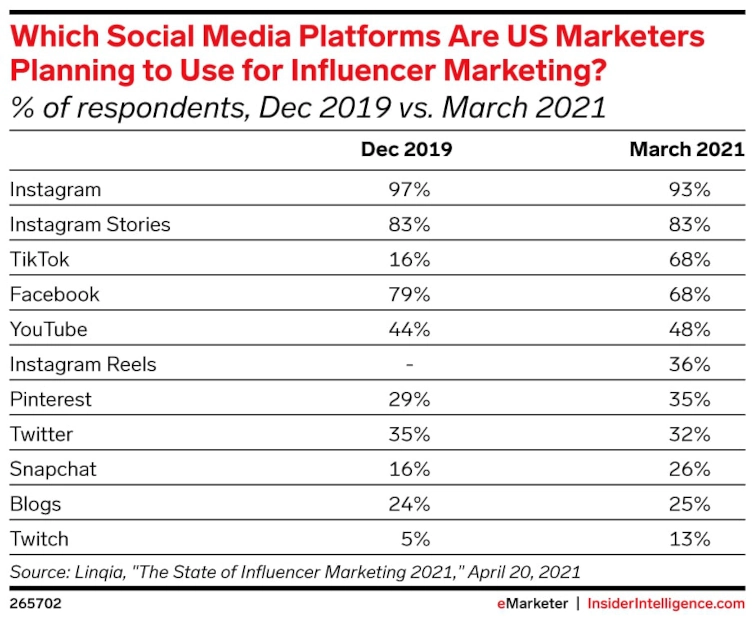
Image via eMarketer
(Source: Mediakix)
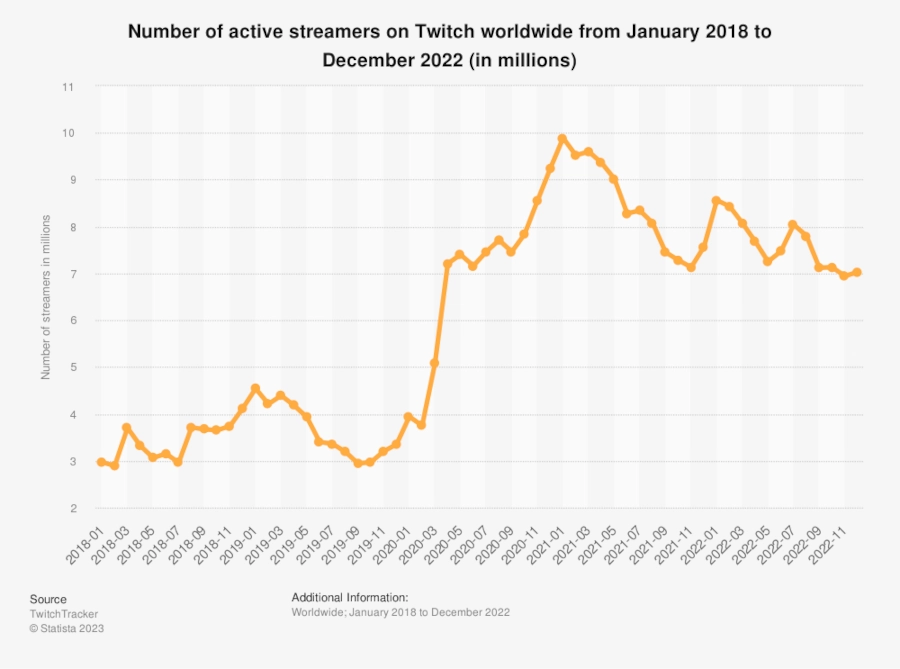
Image via Statista
In the last few years, Twitch has become home to thousands of talented live streamers across several industries, including gaming, music, food, and more.
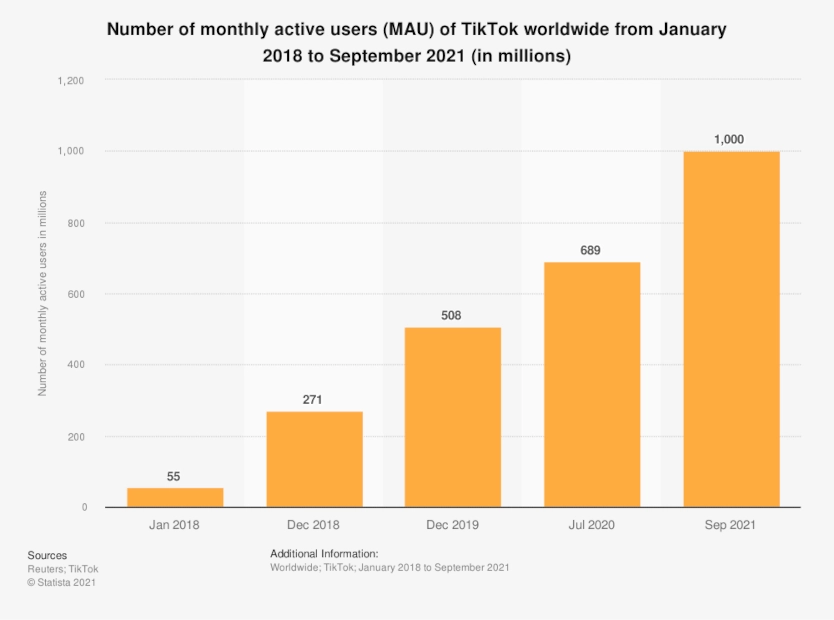
Image via Statista
TikTok officially reached 1 billion monthly active users (MAUs) in September 2021, a milestone only a few social platforms have achieved.
(Source: Statista)
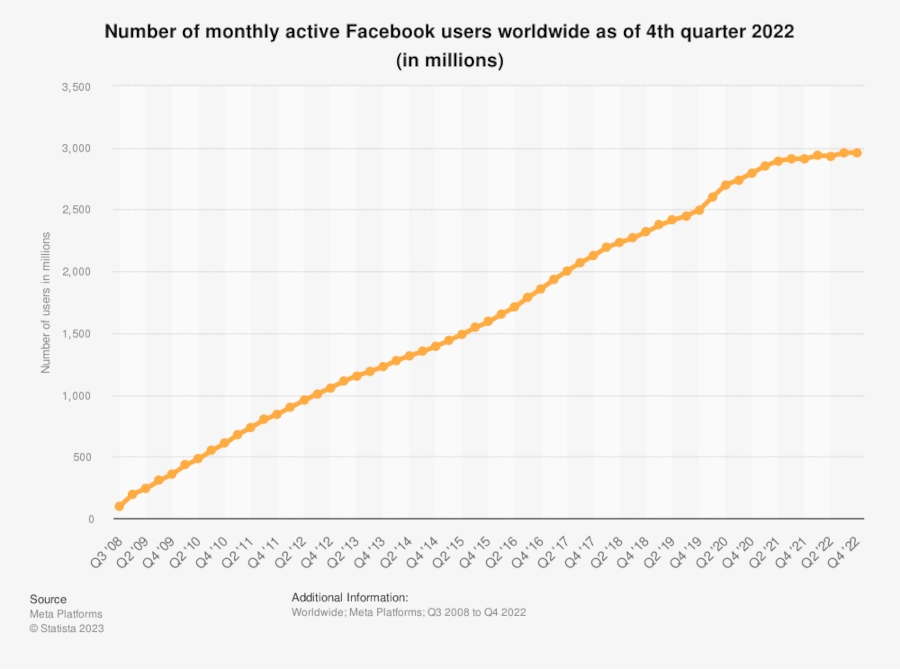
Image via Statista
(Source: eMarketer)
These users are self-professed creators who leverage one or more social channels to produce original content for audiences on a regular basis.
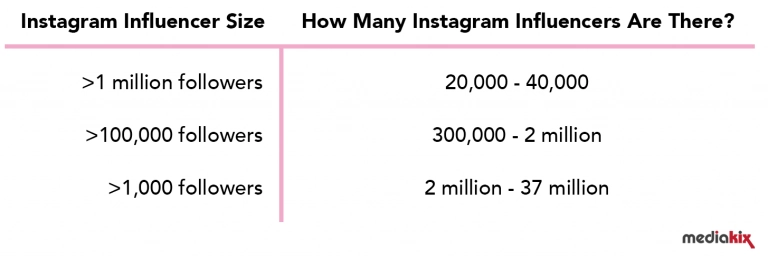
Image via Mediakix
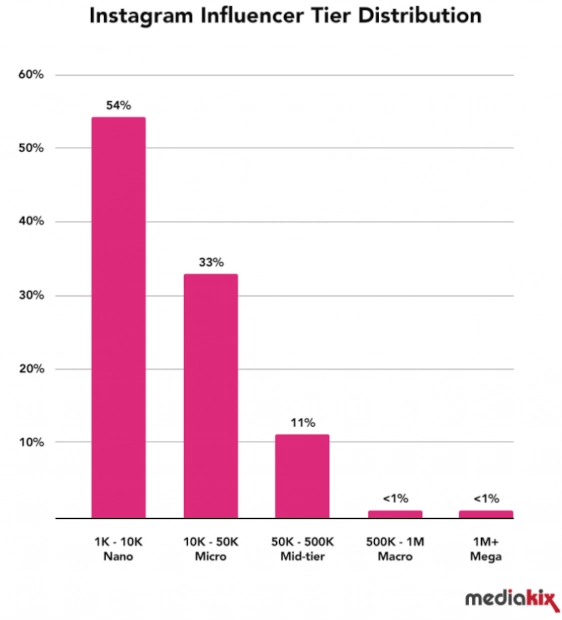
Image via Mediakix
Conversely, less than 13% of Instagram creators achieve more than 50,000 followers.
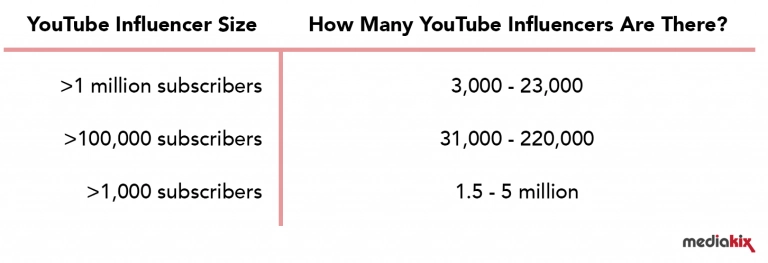
Image via Mediakix
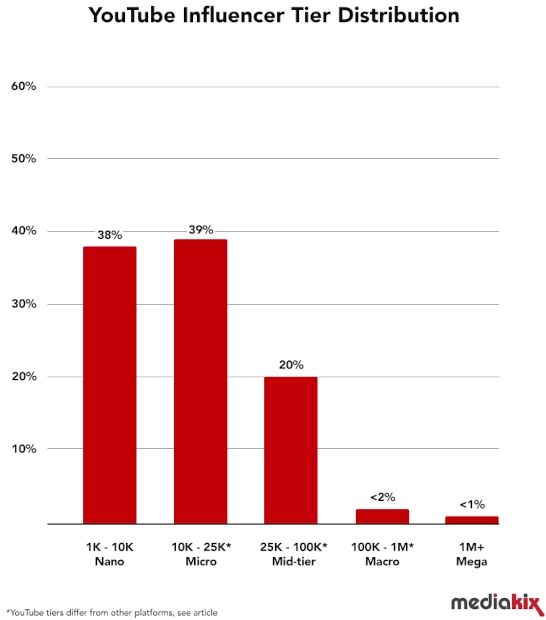
Image via Mediakix
It is extremely difficult to become a macro influencer on YouTube. Currently less than 3% of all YouTube creators have more than 100,000 subscribers.
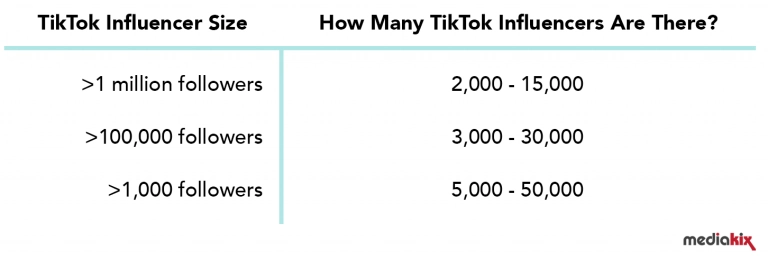
Image via Mediakix
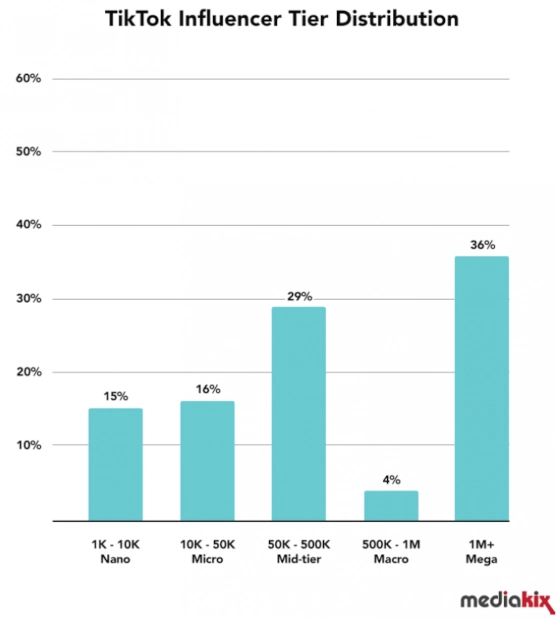
Image via Mediakix
TikTok is the social channel with the highest percentage of mega influencers.
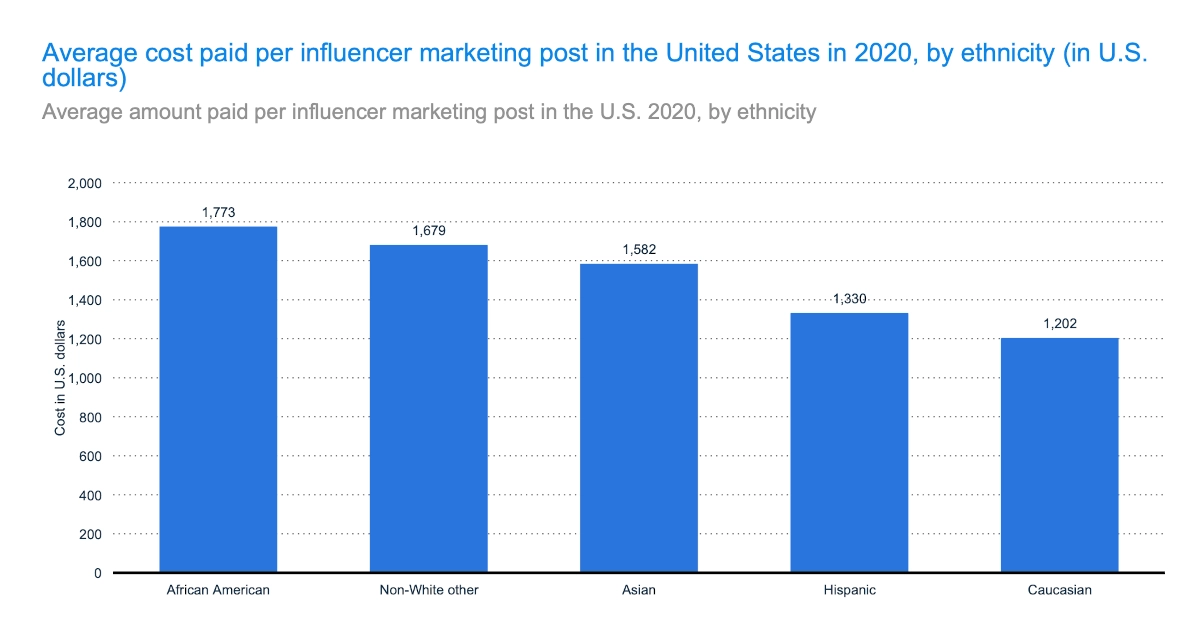
Image via Statista
Thanks to more calls for inclusivity among creators, influencer marketing is one the first marketing tactics to specifically target minority groups and marginalized communities.
(Source: Statista)
Creators understand their audiences better than most brands. That’s why partnering with the right influencer is the most critical part of any campaign.
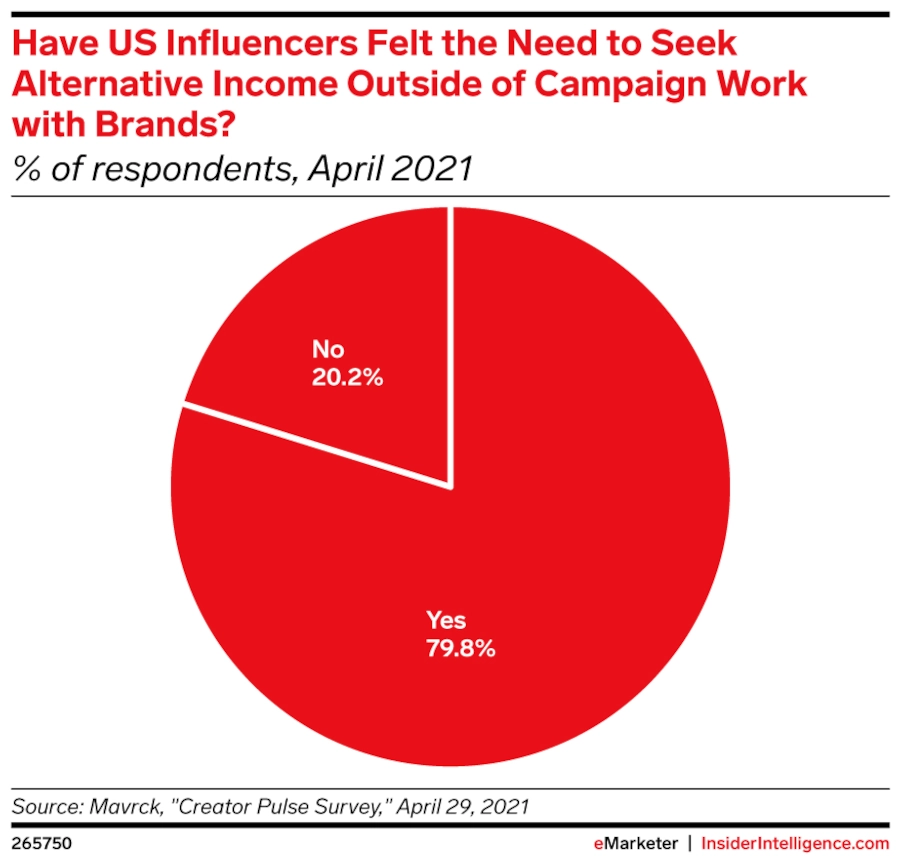
Image via eMarketer
Some influencers maintain day jobs or leverage other creator income opportunities like Patreon or tipping.
(Source: eMarketer)
Nearly 70% of all reported influencer income comes from brand-creator partnerships in 2021. Affiliate partnerships account for another 10% of creator income.
(Source: Mediakix)
(Source: The Guardian)
(Source: GRIN’s Creator Discovery Suite)
(Source: GRIN’s Creator Discovery Suite)
Cristiano rakes in an astounding 9 million engagements with an average engagement rate of 2.4%.
(Source: GRIN’s Creator Discovery Suite)
(Source: GRIN’s Creator Discovery Suite)
Between the two platforms, Khaby has over 175 million engaged followers.
(Source: GRIN’s Creator Discovery Suite)
(Source: Statista)
These three industries account for an influencer media value (IMV) of $360 million (tech), $190 million (gaming), and $130 million (food/beverage).
(Source: Mediakix)
(Source: Mediakix)
For the first time in history, being a full-time social media creator is a viable career option for the current and next generation of teens and adults.
(Source: Statista)
TikTok currently serves the youngest consumer audience online today and is the most popular social channel for those under 25.
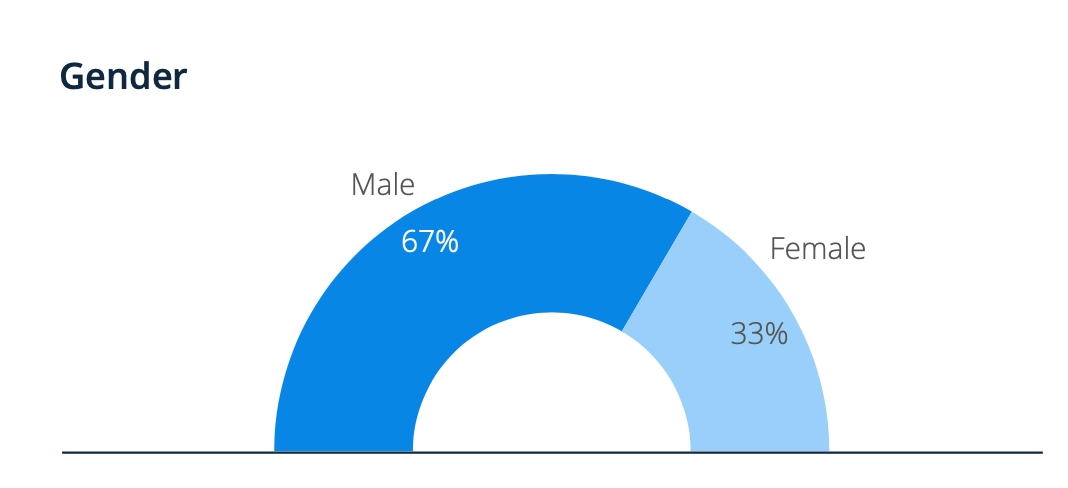
Image via Statista
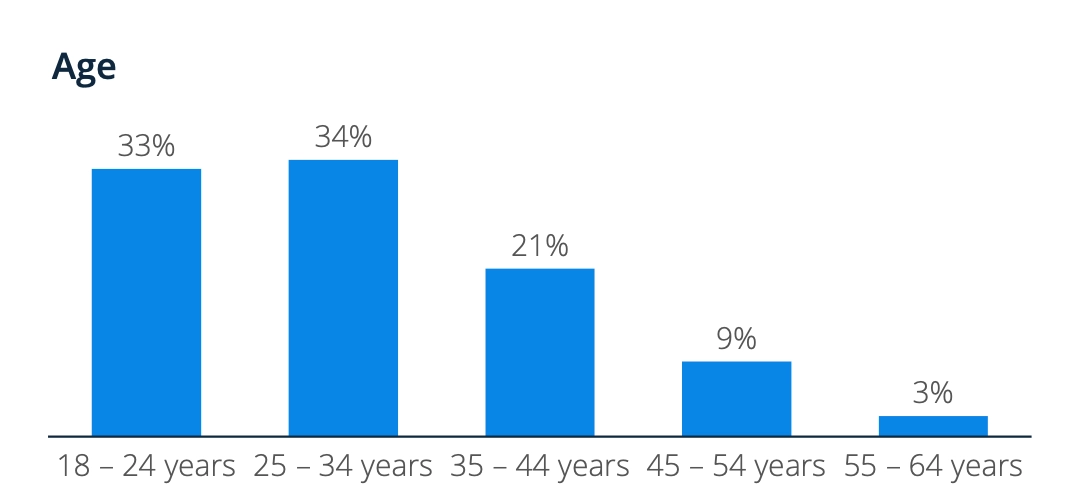
Image via Statista
(Source: Statista)
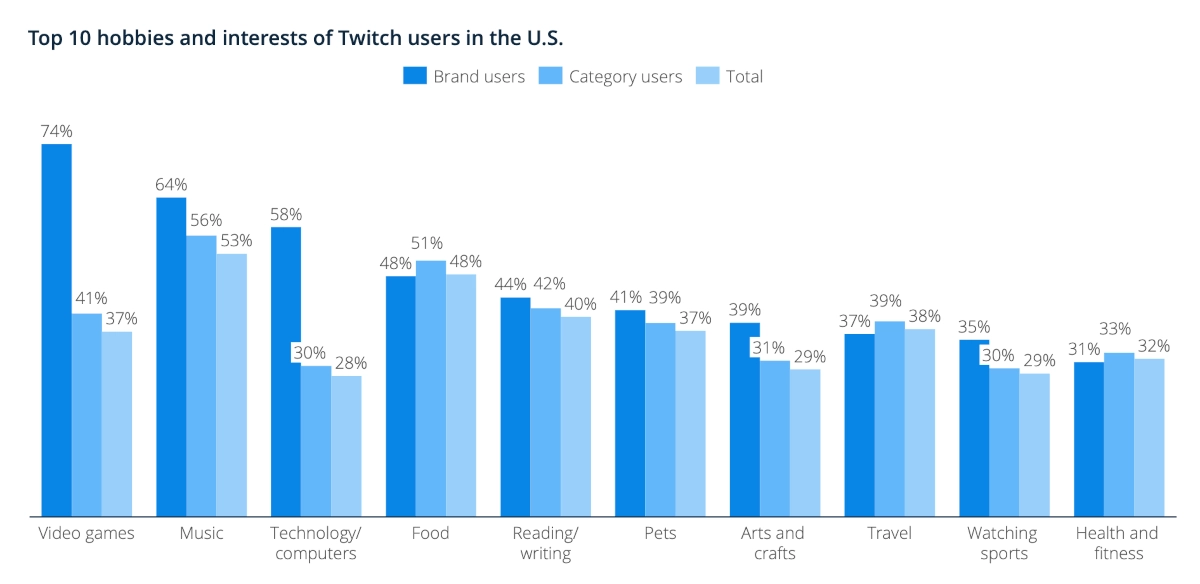
Image via Statista
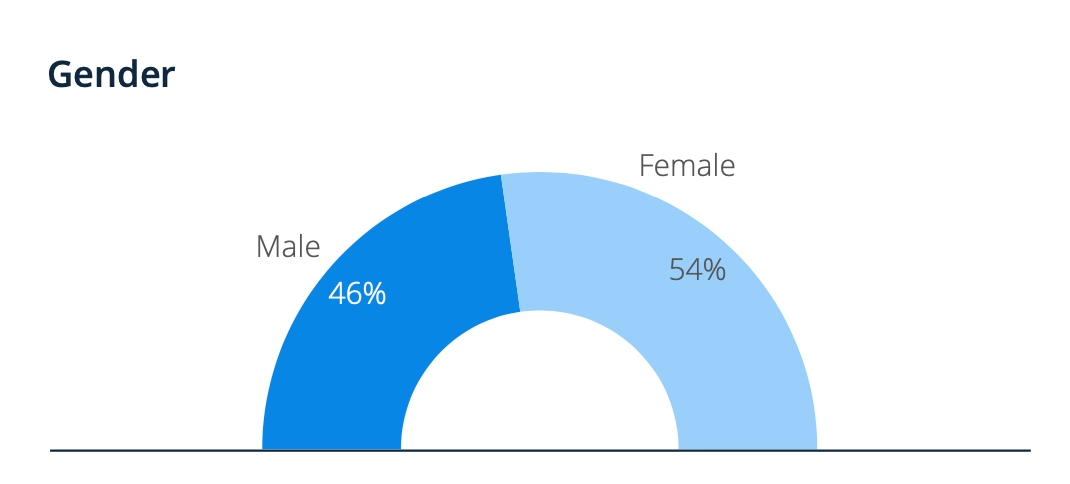
Image via Statista
(Source: Statista)
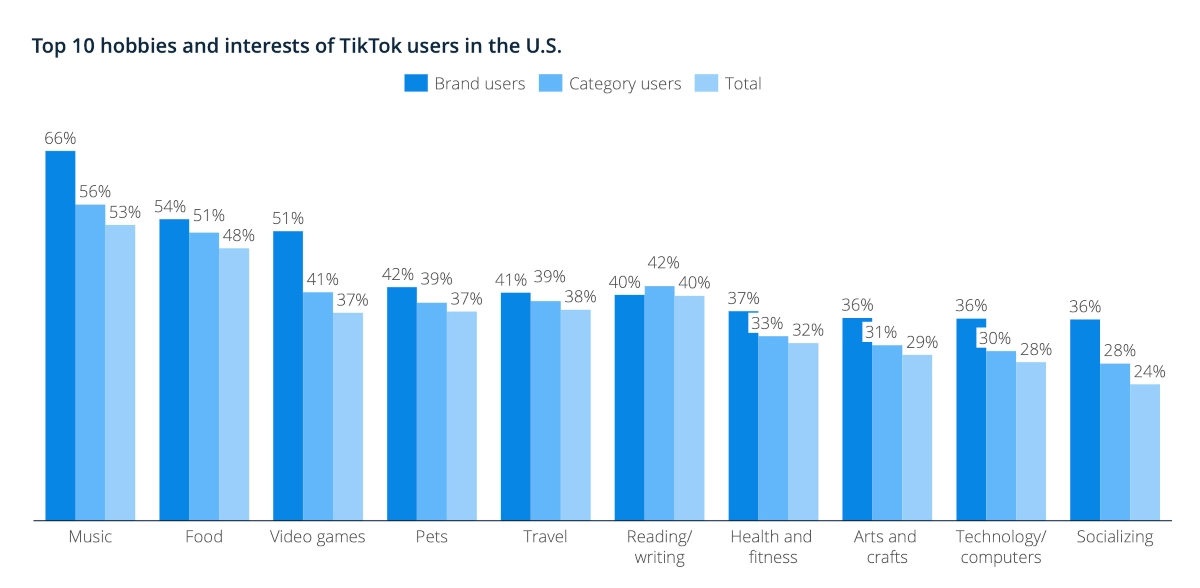
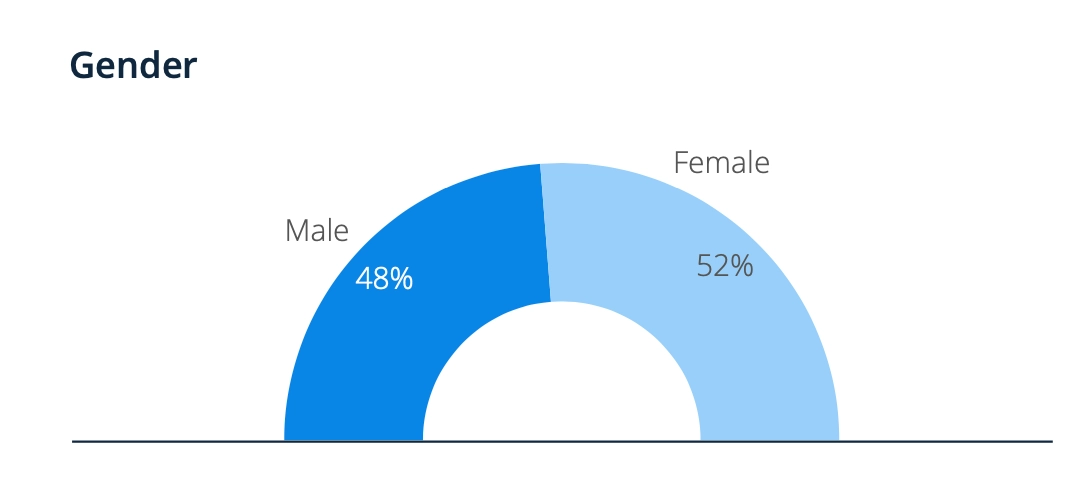
Image via Statista
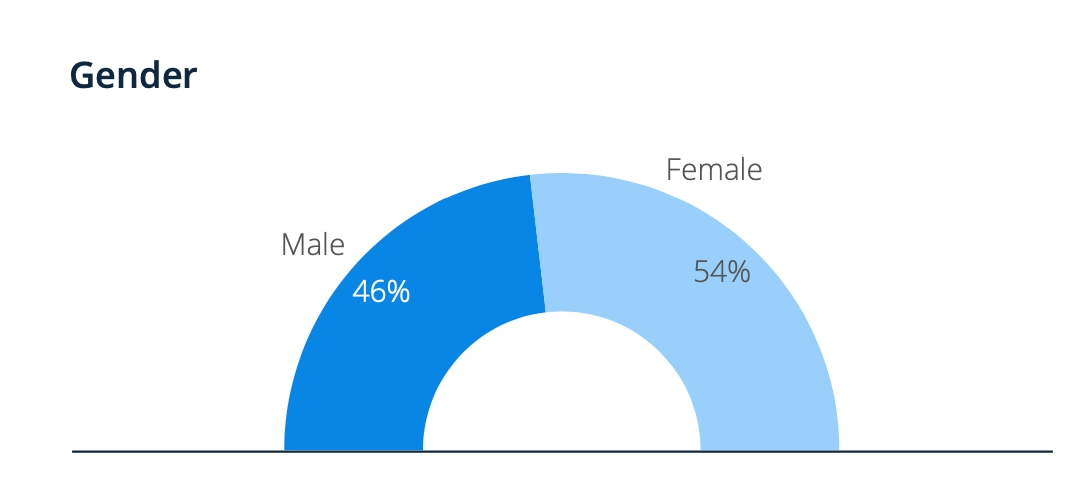
Image via Statista
(Source: GRIN Report: Power of Influencer Marketing in Numbers)
Facebook Marketplace (servicing both Facebook and Instagram) is the most sophisticated social commerce platform today.
(Source: Statista)
(Source: eMarketer)
In 2021, there are approximately 90 million social buyers compared to 64 million in 2019.
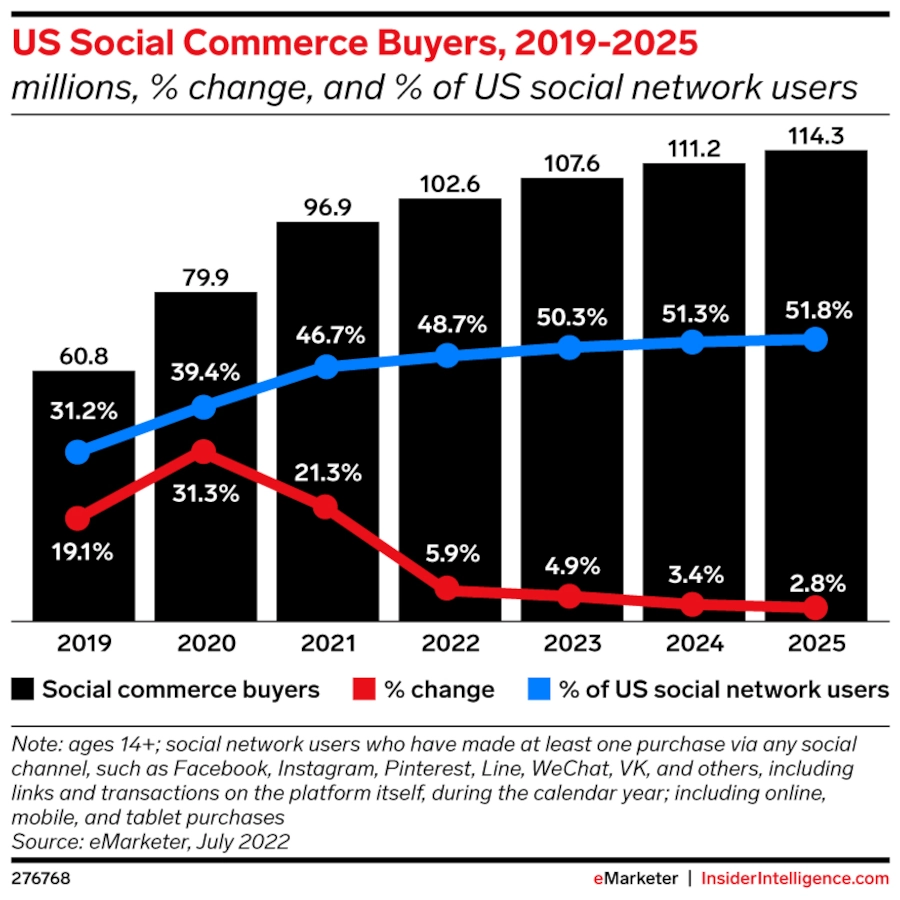
Image via eMarketer
(Source: eMarketer)
Experts anticipate more than $36 billion in social sales by the end of 2021, compared to just under $20 billion in 2019.
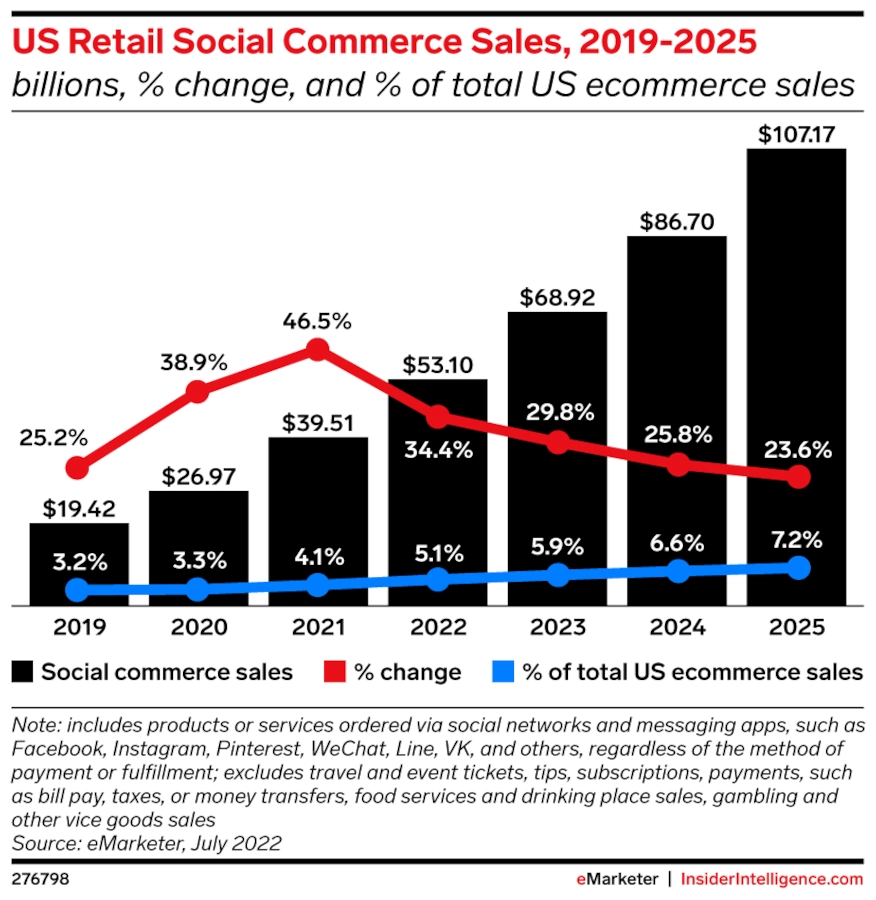
Image via eMarketer
(Source: Statista)
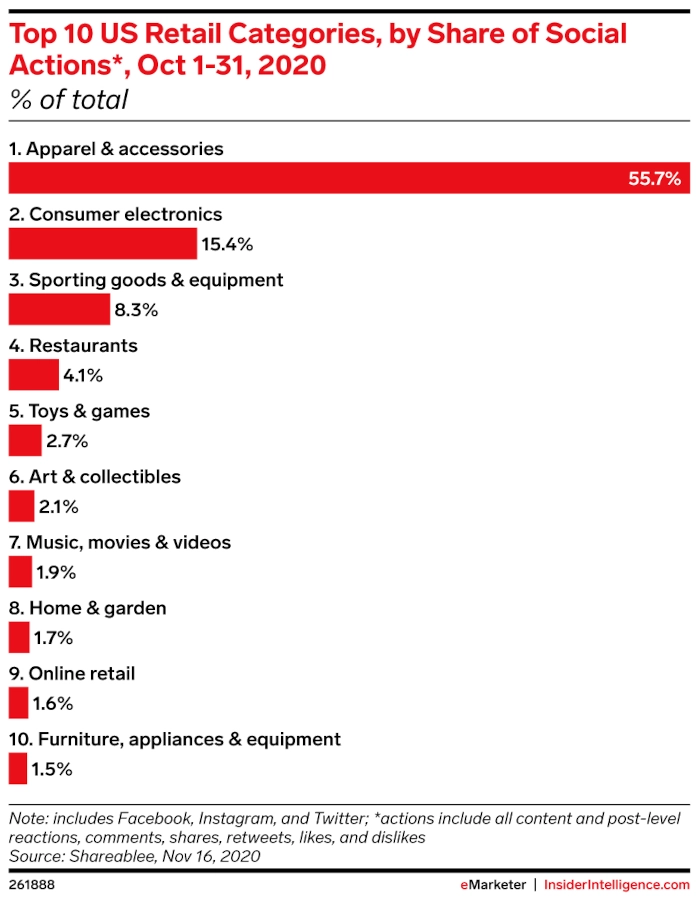
Image via eMarketer
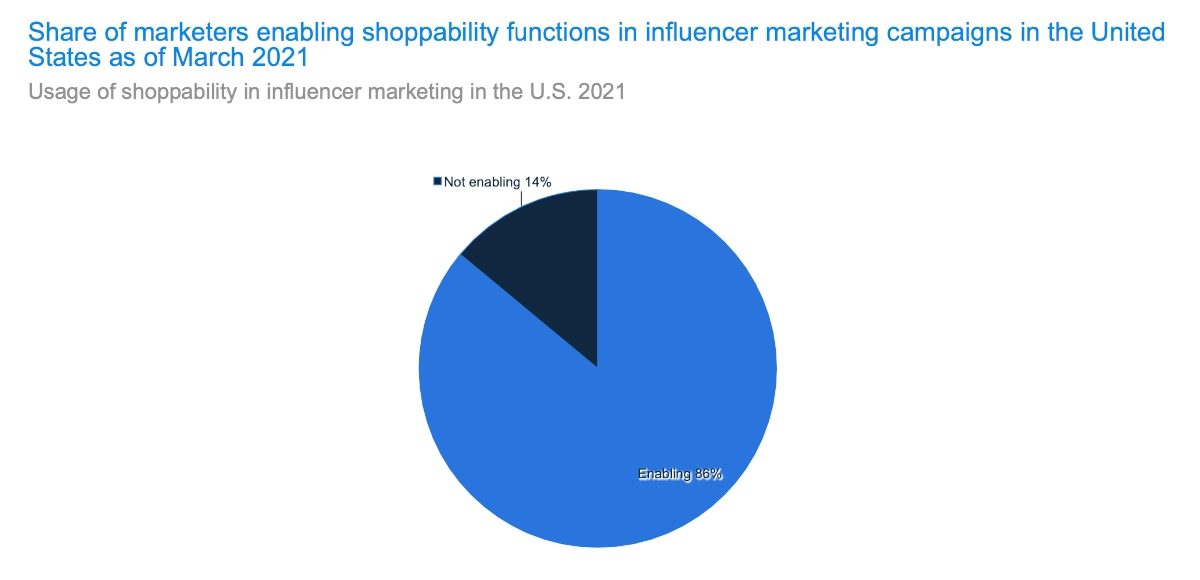
These features include in-app shopping, shoppable image ads, digital price tags, AR filters, and more.
(Source: Statista)
(Source: Statista)

Image via Statista
(Source: Statista)
This data reveals that many brands are unsure about how to utilize this new channel. Brands that leverage this platform early have a clear advantage over their competitors, particularly when reaching younger audiences.
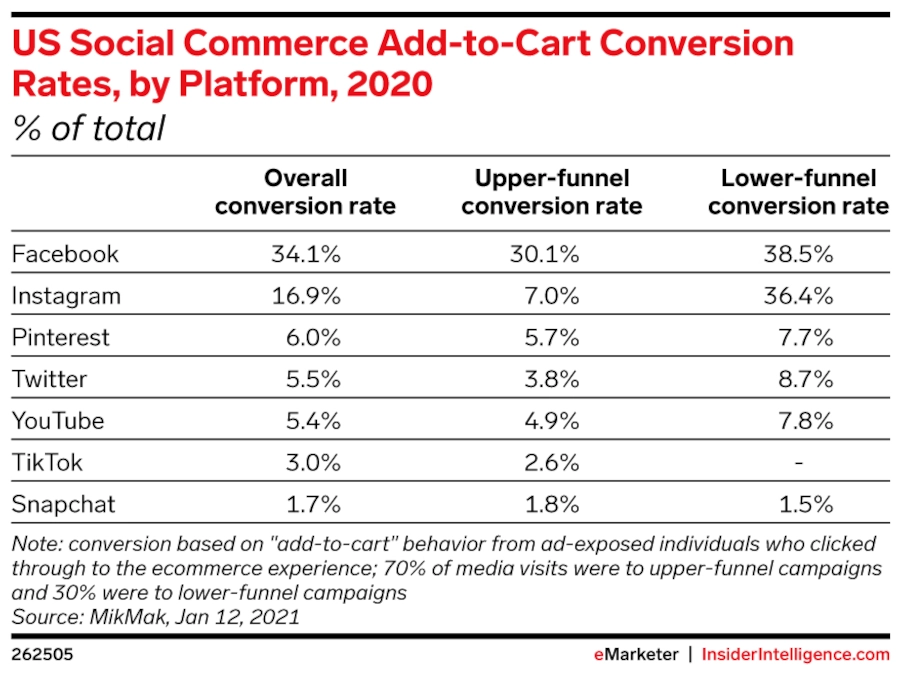
Image via eMarketer
High conversion rates for Facebook and Instagram result primarily from Facebook Marketplace’s advanced social commerce features.
The evidence for influencer marketing as a leading digital marketing strategy is overwhelming. As traditional marketing tactics lose effectiveness, it is more important than ever that brands find better ways to connect with their customers. These influencer marketing statistics demonstrate that creator partnerships pave the way for better brand-consumer relationships.
Learn more about influencer marketing: Influencer Marketing 101
Our team keeps a finger on the pulse, so you’re always working with the latest information.